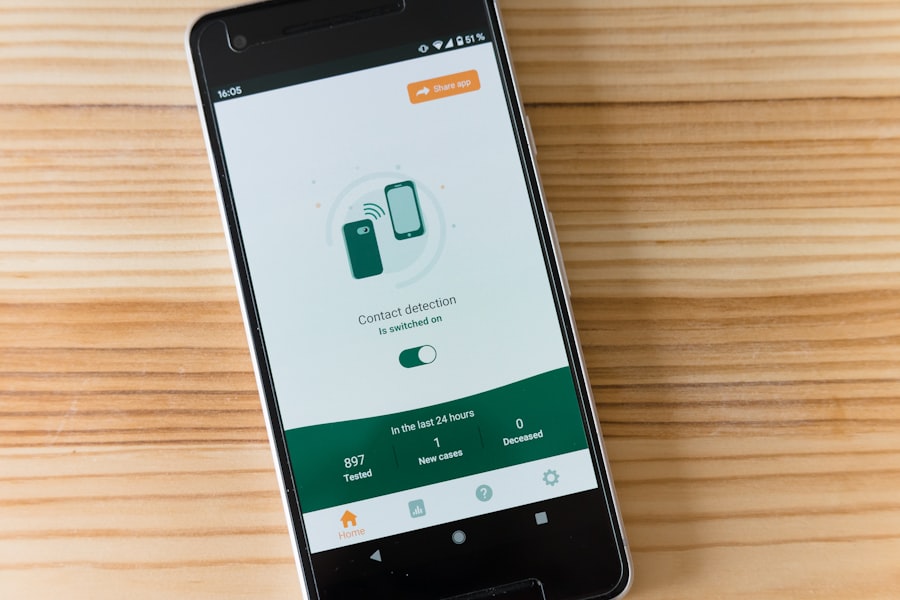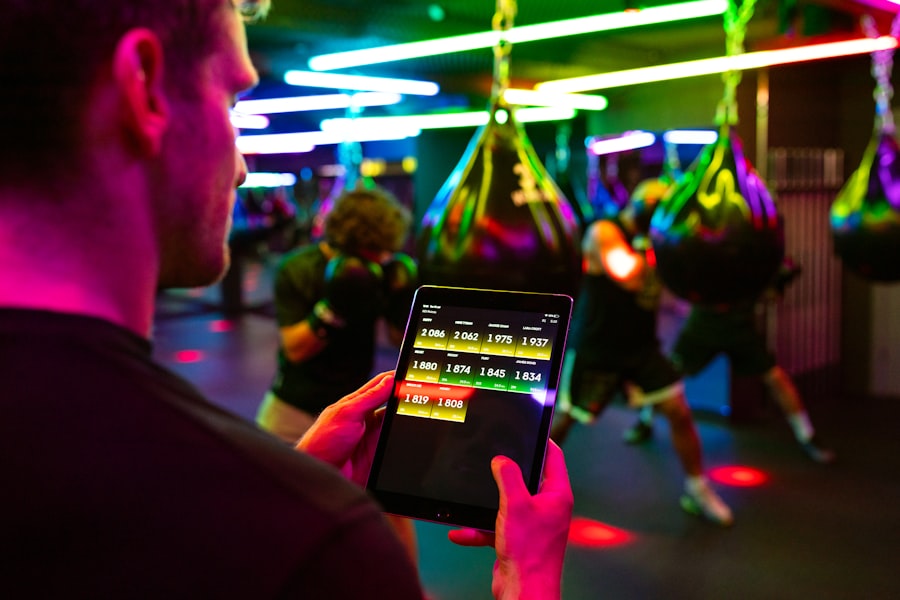Dyslexia is a specific learning disability that affects an individual’s ability to read, write, and spell. It is often characterized by difficulties with phonological processing, which is the ability to recognize and manipulate the sounds in spoken language. This can lead to challenges in decoding words, which is essential for reading fluency.
As we delve deeper into understanding dyslexia, we realize that it is not merely a reflection of intelligence or effort; rather, it is a neurological condition that can manifest in various ways. Individuals with dyslexia may struggle with reading comprehension, spelling, and even writing, but they often possess strengths in other areas such as problem-solving, creativity, and critical thinking. Moreover, dyslexia is not a one-size-fits-all condition; it exists on a spectrum, meaning that its severity can vary significantly from one individual to another.
Some may experience mild difficulties that can be managed with appropriate strategies, while others may face more profound challenges that require intensive support. Understanding dyslexia involves recognizing these nuances and appreciating the unique experiences of each individual. As we work towards creating inclusive environments, it becomes crucial to foster awareness and empathy among educators, peers, and families.
By doing so, we can help dismantle the stigma surrounding dyslexia and promote a more supportive atmosphere for those affected.
Recognizing Dyslexia in the Classroom
Recognizing dyslexia in the classroom is a vital step toward providing the necessary support for students who may be struggling with reading and writing. Teachers play a crucial role in identifying potential signs of dyslexia early on. Common indicators include difficulty with phonemic awareness, trouble with spelling, and challenges in reading fluency.
Students may also exhibit a reluctance to read aloud or may avoid reading tasks altogether. By being vigilant and observant, we can catch these signs early and initiate conversations with parents and specialists to ensure that appropriate interventions are put in place. In addition to academic indicators, emotional and behavioral signs can also provide insight into a student’s experience with dyslexia.
Many students may feel frustrated or anxious about their reading abilities, leading to decreased self-esteem and motivation. As educators, we must create an environment where students feel safe to express their struggles without fear of judgment. By fostering open communication and encouraging students to share their experiences, we can better understand their needs and tailor our approaches accordingly.
Recognizing dyslexia is not just about identifying challenges; it is also about celebrating the unique strengths that these students bring to the classroom.
Effective Instructional Strategies for Dyslexic Students

Implementing effective instructional strategies for dyslexic students requires a multifaceted approach that addresses their specific learning needs. One of the most effective methods is the use of structured literacy programs that emphasize phonics and phonemic awareness. These programs provide explicit instruction in sound-letter relationships, enabling students to develop essential decoding skills.
By incorporating multisensory techniques—such as using visual aids, auditory cues, and kinesthetic activities—we can engage students in a way that reinforces their learning and helps them retain information more effectively. Additionally, providing accommodations such as extra time on tests, access to audiobooks, or the use of assistive technology can significantly enhance the learning experience for dyslexic students. These accommodations allow them to demonstrate their knowledge without being hindered by their reading difficulties.
Furthermore, fostering a growth mindset within the classroom can empower students to embrace challenges and view setbacks as opportunities for growth. By celebrating small victories and encouraging perseverance, we can help dyslexic students build resilience and confidence in their abilities.
Creating Dyslexia-Friendly Classrooms
Creating dyslexia-friendly classrooms involves cultivating an inclusive environment that supports diverse learning styles and needs. This begins with physical classroom arrangements that minimize distractions and promote focus. For instance, we can create designated quiet areas for independent work or provide flexible seating options that allow students to choose their preferred learning spaces.
Additionally, using clear and consistent visual aids—such as charts, diagrams, and color-coded materials—can help reinforce concepts and make information more accessible for all learners. Moreover, fostering a culture of collaboration among students can enhance social interactions and peer support. Group activities that encourage teamwork can help dyslexic students feel more connected to their peers while also allowing them to showcase their strengths in areas such as creativity or problem-solving.
By promoting empathy and understanding among classmates, we can create a supportive network that uplifts all learners. Ultimately, a dyslexia-friendly classroom is one where every student feels valued and empowered to reach their full potential.
Technology and Dyslexia
In today’s digital age, technology plays an increasingly important role in supporting students with dyslexia. Various tools and applications are designed specifically to assist individuals with reading difficulties by providing alternative methods for accessing information. For instance, text-to-speech software allows students to listen to written content rather than read it themselves, which can alleviate some of the pressure associated with decoding text.
Additionally, speech-to-text applications enable students to express their thoughts verbally without being hindered by writing challenges. Our COCO THINKS and COCO MOVES app exemplifies how technology can be harnessed to support special needs children, including those with dyslexia. These educational apps offer interactive learning experiences tailored to the unique needs of each child.
Through engaging activities that promote literacy skills while also addressing other developmental areas such as social-emotional learning and motor skills, we can create a holistic approach to education that empowers children with diverse abilities. By integrating technology into our teaching practices, we can enhance engagement and provide personalized support for dyslexic students.
Advocating for Dyslexic Students

Advocating for dyslexic students is essential in ensuring they receive the support they need to thrive academically and socially. As educators, we have a responsibility to raise awareness about dyslexia within our schools and communities. This involves educating colleagues about the characteristics of dyslexia and promoting best practices for instruction and intervention.
By fostering a culture of understanding and acceptance, we can help dismantle misconceptions surrounding dyslexia and advocate for necessary resources and support systems. Furthermore, advocating for dyslexic students extends beyond the classroom walls; it involves engaging with policymakers and educational leaders to influence systemic change. We can work together to promote legislation that supports early identification of learning disabilities and ensures access to appropriate interventions for all students.
By collaborating with organizations dedicated to supporting individuals with dyslexia, we can amplify our voices and create a more equitable educational landscape for all learners.
Collaborating with Parents and Specialists
Collaboration between educators, parents, and specialists is crucial in supporting dyslexic students effectively. Open lines of communication between teachers and parents allow us to share insights about a child’s progress while also gaining valuable information about their experiences at home. By working together as a team, we can develop individualized strategies that cater to each student’s unique needs.
Regular meetings or check-ins can facilitate this collaboration, ensuring that everyone is on the same page regarding goals and expectations. Involving specialists—such as reading interventionists or special education professionals—can further enhance our ability to support dyslexic students. These experts bring specialized knowledge and resources that can inform our instructional practices and provide targeted interventions tailored to individual needs.
By fostering a collaborative approach that includes parents and specialists, we create a comprehensive support system that empowers dyslexic students to succeed both academically and socially.
Continuing Professional Development for Teachers
Continuing professional development is essential for teachers who wish to stay informed about best practices for supporting dyslexic students. Engaging in workshops, conferences, or online courses focused on dyslexia can deepen our understanding of the condition while equipping us with effective strategies for instruction. By staying current on research-based practices, we can enhance our ability to meet the diverse needs of our students.
Moreover, participating in professional learning communities allows us to share experiences and insights with colleagues who are also dedicated to supporting dyslexic learners. These collaborative spaces foster ongoing dialogue about challenges faced in the classroom while also providing opportunities for collective problem-solving. As we commit ourselves to lifelong learning, we not only improve our own teaching practices but also contribute to creating an inclusive educational environment where all students can thrive.
In conclusion, understanding dyslexia requires a comprehensive approach that encompasses recognition, effective strategies, collaboration, advocacy, technology integration, and ongoing professional development. By working together as educators, parents, specialists, and advocates, we can create an inclusive educational landscape where every student—regardless of their learning differences—has the opportunity to succeed. Through our commitment to fostering understanding and support for dyslexic learners, we pave the way for a brighter future where all children can thrive academically and socially.
For educators seeking to enhance their understanding and skills in supporting dyslexic students, it is crucial to explore various educational resources and methodologies. While the article “Pedagogical Approaches for Helping Dyslexic Students: Teacher Training” provides in-depth insights into specific strategies for dyslexia, another valuable resource can be found in the benefits of reading for the elderly, which indirectly supports cognitive development strategies that can be adapted for dyslexic learners. To explore how reading activities can serve as an enrichment activity and potentially benefit dyslexic students through adapted methods, you can read more about it here. This article discusses the cognitive benefits of reading, which can be a useful reference for developing tailored reading programs for students with learning disabilities.



